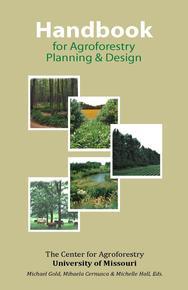Agroforestry practices help landowners diversify products, markets, and farm income; improve soil and water quality; and reduce erosion, non-point source pollution, and flood damage. The integrated agroforestry practices enhance land and aquatic habitats for fish and wildlife and improve biodiversity while sustaining land resources for generations to come.
Together with the Training Manual for Applied Agroforestry Practices, the steps provided in the Handbook for Agroforestry Planning and Design will allow you to identify what agroforestry products can grow on your land, which of these products you can sell profitably, and how to develop basic business and marketing strategies.
Want more information? See the related SARE grant:
- Increasing Agroforestry Adoption and Networking in the Midwest through Targeted Professional Development (ENC12-129)
This material is based upon work that is supported by the National Institute of Food and Agriculture, U.S. Department of Agriculture through the Sustainable Agriculture Research and Education (SARE) program. Any opinions, findings, conclusions, or recommendations expressed in this publication are those of the author(s) and should not be construed to represent any official USDA or U.S. Government determination or policy.
